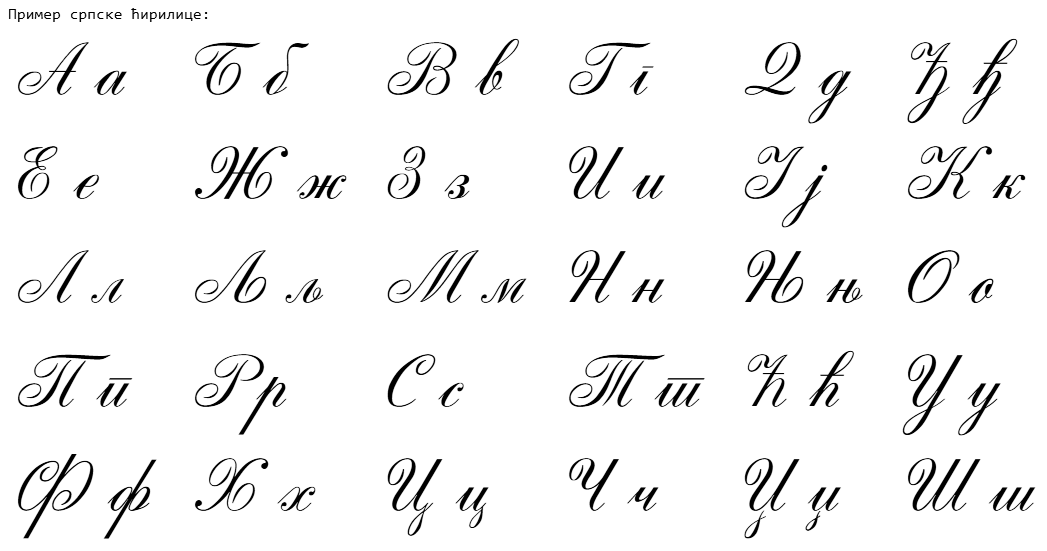|
Drekavac
Drekavac, (literally "the screamer" or "the screecher"Levi, Pavle (2007). ''Disintegration in frames: aesthetics and ideology in the Yugoslav and post-Yugoslav cinema''. Stanford, Calif.: Stanford University Presspage 181 .), also called drekalo, krekavac, zdrekavac or zrikavac, is a mythical creature in South Slavic mythology. The name is derived from the verb "drečati" ("to screech"). Description In South Slavic mythology and folk tales this creature has been variously described: * In some folk tales it is depicted as an undead man who emerges from his grave by night to haunt the living. * In others the revenant is portrayed as unbaptised child which rises from its grave at night to haunt its parents and can also sometimes be heard entreating people passing cemeteries to baptise it and thus end its misery. * In Eastern Serbia it has been depicted in the form of a humanoid canine creature that walks on its back legs. * In the vicinity of Maglaj it has been depicted in the f ... [...More Info...] [...Related Items...] OR: [Wikipedia] [Google] [Baidu] |
Great Bittern
The Eurasian bittern or great bittern (''Botaurus stellaris'') is a wading bird in the bittern subfamily (Botaurinae) of the heron family Ardeidae. There are two subspecies, the northern race (''B. s. stellaris'') breeding in parts of Europe and across the Palearctic, as well as on the northern coast of Africa, while the southern race (''B. s. capensis'') is Endemism, endemic to parts of southern Africa. It is a secretive bird, seldom seen in the open as it prefers to skulk in reed beds and thick vegetation near water bodies. Its presence is apparent in the spring, when the booming call of the male during the breeding season can be heard. It feeds on fish, small mammals, fledgling birds, amphibians, crustaceans and insects. The nest is usually built among reeds at the edge of bodies of water. The female incubates the clutch (eggs), clutch of eggs and feeds the young chicks, which leave the nest when about two weeks old. She continues to care for them until they are fully fledged ... [...More Info...] [...Related Items...] OR: [Wikipedia] [Google] [Baidu] |
Spring (season)
Spring, also known as springtime, is one of the four temperate seasons, succeeding winter and preceding summer. There are various technical definitions of spring, but local usage of the term varies according to local climate, cultures and customs. When it is spring in the Northern Hemisphere, it is autumn in the Southern Hemisphere and vice versa. At the spring (or vernal) equinox, days and nights are approximately twelve hours long, with daytime length increasing and nighttime length decreasing as the season progresses until the Summer Solstice in June (Northern Hemisphere) and December (Southern Hemisphere). Spring and "springtime" refer to the season, and also to ideas of rebirth, rejuvenation, renewal, resurrection and regrowth. Subtropical and tropical areas have climates better described in terms of other seasons, e.g. dry or wet, monsoonal or cyclonic. Cultures may have local names for seasons which have little equivalence to the terms originating in Europe. Meteoro ... [...More Info...] [...Related Items...] OR: [Wikipedia] [Google] [Baidu] |
Protagonist
A protagonist () is the main character of a story. The protagonist makes key decisions that affect the plot, primarily influencing the story and propelling it forward, and is often the character who faces the most significant obstacles. If a story contains a subplot, or is a narrative made up of several stories, then each subplot may have its own protagonist. The protagonist is the character whose fate is most closely followed by the reader or audience, and who is opposed by the antagonist. The antagonist provides obstacles and complications and creates conflicts that test the protagonist, revealing the strengths and weaknesses of the protagonist's character, and having the protagonist develop as a result. Etymology The term ''protagonist'' comes , combined of (, 'first') and (, 'actor, competitor'), which stems from (, 'contest') via (, 'I contend for a prize'). Ancient Greece The earliest known examples of a protagonist are found in Ancient Greece. At first, dramatic pe ... [...More Info...] [...Related Items...] OR: [Wikipedia] [Google] [Baidu] |
Fishermen
A fisher or fisherman is someone who captures fish and other animals from a body of water, or gathers shellfish. Worldwide, there are about 38 million commercial and subsistence fishers and fish farmers. Fishers may be professional or recreational. Fishing has existed as a means of obtaining food since the Mesolithic period.Profile for the USA * inadequate preparation for emergencies * poor vessel maintenance and inadequate safety equipment * lack of awareness of or ignoring stability issues. Many fishers, while accepting that fishing is dangerous, staunchly defend their independence. Many proposed laws and additional regulation to increase safety have been defeated because fishers oppose them. Alaska's commercial fishers work in one of the world's harshest environments. Many of the hardships they endure include isolated fishing grounds, high winds, seasonal darkness, very cold water, icing, and short fishing seasons, where very long work days are the norm. Fatigue, physical s ... [...More Info...] [...Related Items...] OR: [Wikipedia] [Google] [Baidu] |
Superstition
A superstition is any belief or practice considered by non-practitioners to be irrational or supernatural, attributed to fate or magic, perceived supernatural influence, or fear of that which is unknown. It is commonly applied to beliefs and practices surrounding luck, amulets, astrology, fortune telling, spirits, and certain paranormal entities, particularly the belief that future events can be foretold by specific (apparently) unrelated prior events. Also, the word ''superstition'' is often used to refer to a religion not practiced by the majority of a given society regardless of whether the prevailing religion contains alleged superstitions or to all religions by the antireligious. Contemporary use Definitions of the term vary, but commonly describe superstitions as irrational beliefs at odds with scientific knowledge of the world. Stuart Vyse proposes that a superstition's "presumed mechanism of action is inconsistent with our understanding of the physical world", wit ... [...More Info...] [...Related Items...] OR: [Wikipedia] [Google] [Baidu] |
Serbian Cyrillic
The Serbian Cyrillic alphabet ( sr, / , ) is a variation of the Cyrillic script used to write the Serbian language, updated in 1818 by Serbian linguist Vuk Karadžić. It is one of the two alphabets used to write standard modern Serbian, the other being Gaj's Latin alphabet. Karadžić based his alphabet on the previous Slavonic-Serbian script, following the principle of "write as you speak and read as it is written", removing obsolete letters and letters representing iotified vowels, introducing from the Latin alphabet instead, and adding several consonant letters for sounds specific to Serbian phonology. During the same period, linguists led by Ljudevit Gaj adapted the Latin alphabet, in use in western South Slavic areas, using the same principles. As a result of this joint effort, Serbian Cyrillic and Gaj's Latin alphabets for Serbian-Croatian have a complete one-to-one congruence, with the Latin digraphs Lj, Nj, and Dž counting as single letters. Karadžić's Cyril ... [...More Info...] [...Related Items...] OR: [Wikipedia] [Google] [Baidu] |
Branko Ćopić
Branko Ćopić ( sr-cyrl, Бранко Ћопић, ; 1 January 1915 – 26 March 1984) was a Serbian, Bosnian and Yugoslavian writer. He wrote poetry, short stories and novels, and became famous for his stories for children and young adults, often set during World War II in revolutionary Yugoslavia, written with characteristic Ćopić's humor in the form of ridicule, satire and irony. As a professional writer, Ćopić was very popular and was able to sell large number of copies. This allowed him to live solely from his writings, which was rare for the novelists in Yugoslavia at the time. However, quality of his writings brought him inclusion into primary school curriculum, which meant that some of his stories found its way in to the text-books and some novels became compulsory reading. In the early 1950s, he also wrote satirical stories, criticizing social and political anomalies and personalities from the country's political life of the time, for which he was considered a diss ... [...More Info...] [...Related Items...] OR: [Wikipedia] [Google] [Baidu] |
Sheep
Sheep or domestic sheep (''Ovis aries'') are domesticated, ruminant mammals typically kept as livestock. Although the term ''sheep'' can apply to other species in the genus ''Ovis'', in everyday usage it almost always refers to domesticated sheep. Like all ruminants, sheep are members of the order Artiodactyla, the even-toed ungulates. Numbering a little over one billion, domestic sheep are also the most numerous species of sheep. An adult female is referred to as a ''ewe'' (), an intact male as a ''ram'', occasionally a ''tup'', a castrated male as a ''wether'', and a young sheep as a ''lamb''. Sheep are most likely descended from the wild mouflon of Europe and Asia, with Iran being a geographic envelope of the domestication center. One of the earliest animals to be domesticated for agricultural purposes, sheep are raised for fleeces, meat (lamb, hogget or mutton) and milk. A sheep's wool is the most widely used animal fiber, and is usually harvested by shearing. In Commonw ... [...More Info...] [...Related Items...] OR: [Wikipedia] [Google] [Baidu] |
Tometino Polje
Tometino Polje is a village in the municipality of Požega, western Serbia Serbia (, ; Serbian language, Serbian: , , ), officially the Republic of Serbia (Serbian language, Serbian: , , ), is a landlocked country in Southeast Europe, Southeastern and Central Europe, situated at the crossroads of the Pannonian Bas .... According to the 2002 census, the village has a population of 373 people.Popis stanovništva, domaćinstava i Stanova 2002. Knjiga 1: Nacionalna ili etnička pripadnost po naseljima. Republika Srbija, Republički zavod za statistiku Beograd 2003. References {{commonscat, Tometino Polje Populated places in Zlatibor District ... [...More Info...] [...Related Items...] OR: [Wikipedia] [Google] [Baidu] |
Kangaroo
Kangaroos are four marsupials from the family Macropodidae (macropods, meaning "large foot"). In common use the term is used to describe the largest species from this family, the red kangaroo, as well as the antilopine kangaroo, eastern grey kangaroo, and western grey kangaroo. Kangaroos are indigenous to Australia and New Guinea. The Australian government estimates that 42.8 million kangaroos lived within the commercial harvest areas of Australia in 2019, down from 53.2 million in 2013. As with the terms "wallaroo" and "wallaby", "kangaroo" refers to a paraphyletic grouping of species. All three terms refer to members of the same taxonomic family, Macropodidae, and are distinguished according to size. The largest species in the family are called "kangaroos" and the smallest are generally called "wallabies". The term "wallaroos" refers to species of an intermediate size. There are also the tree-kangaroos, another type of macropod, which inhabit the tropical ra ... [...More Info...] [...Related Items...] OR: [Wikipedia] [Google] [Baidu] |
Krvavica (Kruševac)
Krvavica is a village in the municipality of Kruševac, Serbia Serbia (, ; Serbian language, Serbian: , , ), officially the Republic of Serbia (Serbian language, Serbian: , , ), is a landlocked country in Southeast Europe, Southeastern and Central Europe, situated at the crossroads of the Pannonian Bas .... According to the 2002 census, the village has a population of 862 people.Popis stanovništva, domaćinstava i Stanova 2002. Knjiga 1: Nacionalna ili etnička pripadnost po naseljima. Republika Srbija, Republički zavod za statistiku Beograd 2003. References Populated places in Rasina District {{RasinaRS-geo-stub ... [...More Info...] [...Related Items...] OR: [Wikipedia] [Google] [Baidu] |







